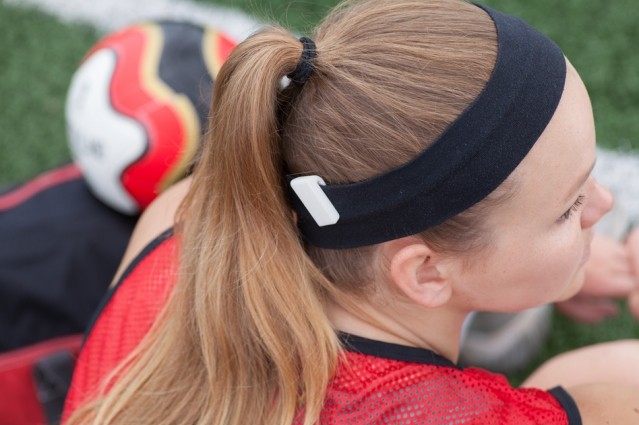It took Ben Harvatine ’12 months to recover from the concussion he got during an MIT wrestling team practice his junior year. So when an assignment called for using a sensor to collect data in his 2.617 (Measurement and Instrumentation) class, that’s when the idea, well, hit him. “I grabbed a bunch of accelerometers, strapped them to my wrestling headgear, and, much to my parents’ chagrin, went back to the wrestling mat to get knocked around and start gathering data,” he says.

His senior year, Harvatine and Seth Berg ’14 built a prototype of the Jolt Sensor in their frat house. In 2013, they launched Jolt Athletics to commercialize the device, a small accelerometer that clips to an athlete’s headgear and vibrates to signal a hit, sending alerts to a mobile app monitored by coaches and parents on the sidelines. With a hard hit, the player’s name on a list turns red, calling for evaluation through the app’s symptom checklist and cognitive assessment test. Today, athletes from grade school to high school use the sensor for football, hockey, wrestling, soccer, lacrosse, snow sports, and more. Collegiate and professional players are testing it as well.
“We’re trying to give parents and coaches another tool to make sure they don’t miss big hits, or maybe catch a hit that doesn’t look that big but measures off the charts,” says Harvatine, a mechanical engineer. His company now has about 600 units in the field and is gearing up for a second production run.
The Jolt has uncovered surprising data on the frequency of big hits in kids as young as 10. “We had a couple of sensors that have registered so many hits, at such a high level, that we’ve contacted the owners to make sure we didn’t have a defective sensor,” Harvatine says. “Turns out it’s just typical for that age range.” He suspects kids that age don’t yet know their own strength, making that level of play a bit more dangerous.
Keep Reading
Most Popular
Large language models can do jaw-dropping things. But nobody knows exactly why.
And that's a problem. Figuring it out is one of the biggest scientific puzzles of our time and a crucial step towards controlling more powerful future models.
How scientists traced a mysterious covid case back to six toilets
When wastewater surveillance turns into a hunt for a single infected individual, the ethics get tricky.
The problem with plug-in hybrids? Their drivers.
Plug-in hybrids are often sold as a transition to EVs, but new data from Europe shows we’re still underestimating the emissions they produce.
Google DeepMind’s new generative model makes Super Mario–like games from scratch
Genie learns how to control games by watching hours and hours of video. It could help train next-gen robots too.
Stay connected
Get the latest updates from
MIT Technology Review
Discover special offers, top stories, upcoming events, and more.